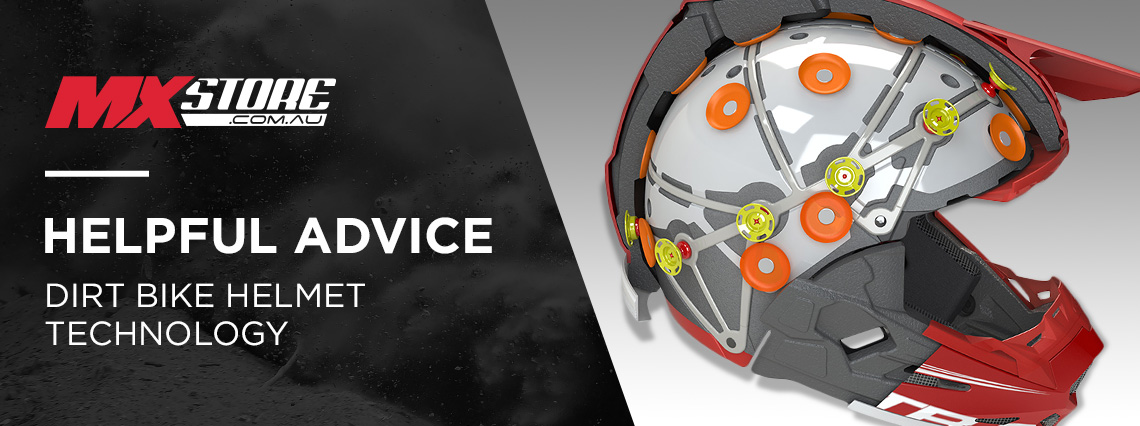Dirt Bike Helmet Technology
Motocross and enduro helmets have advanced significantly over the last decade, and there's now so many different types of technology amongst a variety of helmet makers.
In this guide, we cover the ins and outs to dirt bike helmet technology.
How does a Motocross Helmet protect you?
A modern-day motocross helmet is made up of four key components:
- Hard Outer Shell
- EPS 'Expanded Polystyrene foam' Liner
- Inner Foam Padding/Comfort Liner
- Retention Strap – Chin Strap and “D” Rings
The purpose of the hard outer shell is to prevent penetration of the helmet by a pointed object that might otherwise puncture the skull and to provide structure to the inner liner so it does not disintegrate upon abrasive contact with the ground. This is important because the foams used have very little resistance to penetration and abrasion.
The purpose of the dual-density EPS liner is to crush during an impact, thereby increasing the distance and period of time over which the head stops and reducing its deceleration.
It's important that the liner in an off-road motorcycle helmet is soft and thick so the head decelerates at a gentle rate as it sinks into it. Unfortunately, there is a limit to how thick the helmet can be for the simple reason that the helmet quickly becomes impractical if the liner is more than 1–2 inches (2.5–5.1 cm) thick. This implies a limit to how soft the liner can be.
If the liner is too soft, the head will crush it completely upon impact without coming to a stop. An ideal helmet liner is stiff enough to decelerate the impacting head to stop in a smooth uniform manner just before it completely crushes the liner and no stiffer.
What are motocross helmets made of?
There are varying degrees of protection incorporated into every MX helmet on the market, and the materials used to make a helmet influence how much protection the helmet provides. Different materials for the external shell dramatically change the level of overall protection the helmet offers.
The four materials helmet shells are made from are:
- Polycarbonate
- Fiberglass
- Composite carbon fibre, Kevlar and fibreglass (Tri Composite)
- Carbon Fibre
1. Polycarbonate: Polycarbonate is a high grade injected mould plastic similar to what Air Force fighter jet windscreens all over the world are made from. It's strong and light, and in Australia passes the appropriate safety standards, the only downfall of polycarbonate is the penetration resistance levels are lower than any of the other shell types on the market, making it more prone to crack or shatter under a heavy impact. This material is typically seen amongst entry-level helmets.
2. Fibreglass: Fibreglass is the next step up from a polycarbonate shell as the nature of fibreglass is a much stronger finish with a higher impact resistance level than a polycarbonate shell. Its downfall being in some cases fibreglass can be slightly heavier than some of the other shell types, and for some people, a lightweight helmet is the key thing they are chasing so keep this in mind - try a few on if possible.
3. Tri Composite: Tri Composite is a mixture of three key materials being carbon fibre, kevlar and fibreglass. The addition of the other materials aids in giving the helmet extra strength but also reducing the weight of the outer shell - the downside of this is a tri composite shell is more costly to make, so the price for riders is slightly higher, although at the end of the day, you are spending money on protection for your brain so it comes back to how much you think your head is worth.
4. Carbon Fibre: Carbon Fibre is undoubtedly the best material a modern-day helmet shell can be made from, carbon fibre is used on a variety of performance parts from the driveshafts in Formula 1 cars and the complete frames of MotoGP bikes. The material is super strong but extremely lightweight, creating a perfect combination for a motocross carbon helmet being light and safe. Again its only downfall is the price range is higher, but if you are a serious rider and want to stay safe, then you will save your beer money for a few extra weeks to be able to afford one of these masterpieces.
Latest dirt bike helmet technology:
In recent years, we’ve seen off-road helmet manufacturers take leaps and bounds with the technology that they’ve developed. In this segment, we look at the different types of helmet tech found on the top of the line lids from different helmet makers.
MIPS:
.png)
MIPS stands for Multi-directional Impact Protection System, and this the most popular helmet technology that has been adopted by a number of major brands.
The technology is essentially a slip-liner that’s found inside the helmet between the comfort padding and the EPS foam.
It basically allows the head to move inside the helmet which can reduce the harmful rotational motion otherwise transferred to the brain.
According to the MIPS website, statistics show that when you fall and hit your head, it’s most likely at an angle so reducing the forces of this kind of impact will decrease the chances of brain injuries occurring.
In the event of a crash, falling at an angle creates rotational motion and science has shown that our brains are very sensitive to rotational forces. In an angled impact, these forces may transfer to your brain, which can cause severe head injuries. A MIPS helmet can reduce rotational motion and reduce the risk of brain damage.
Bell Spherical:
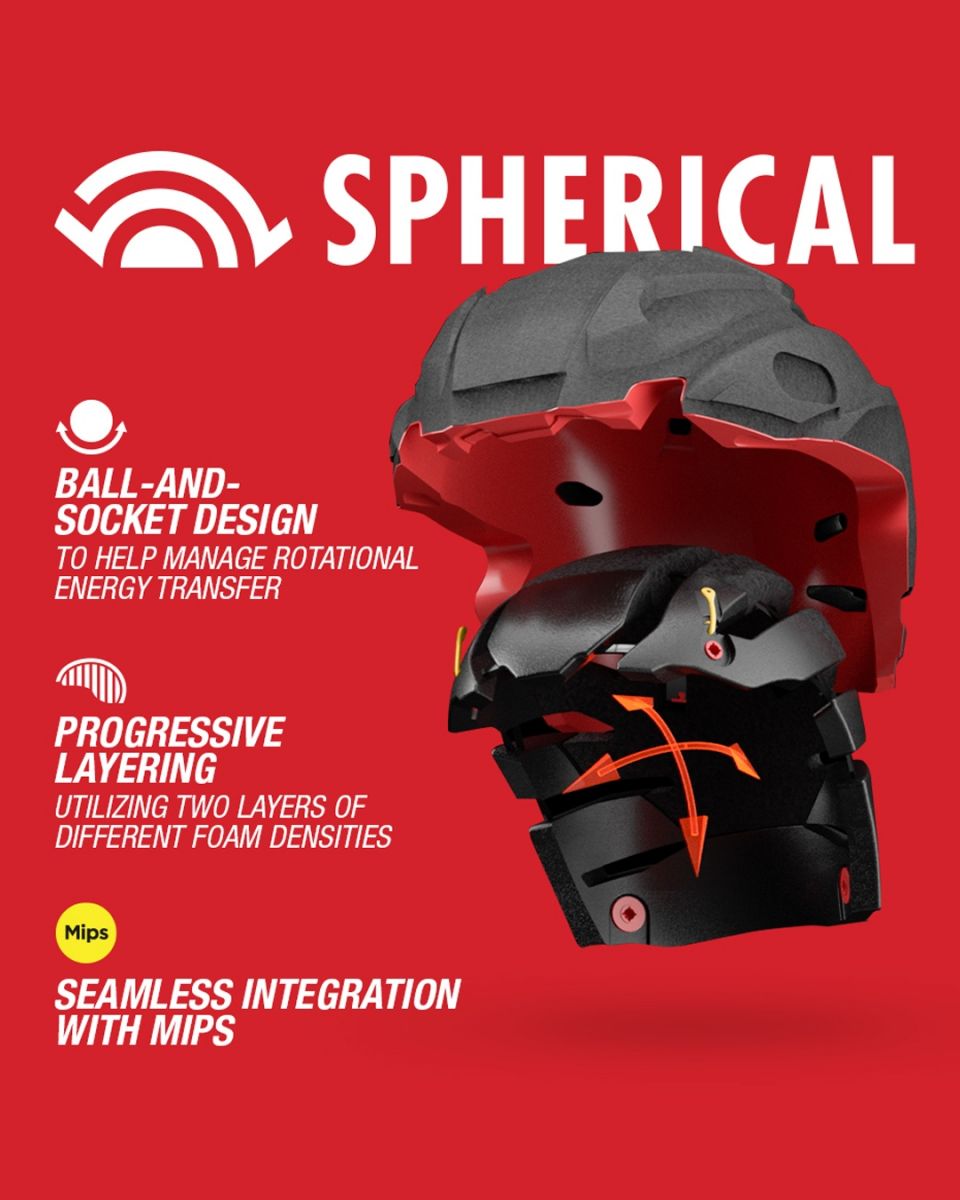
The Bell Spherical technology is the latest and most advanced tech on the helmet market, released on the all-new Bell Moto-10 - the first helmet to use the technology, which is powered by MIPS.
Created in the Bell+Giro testing dome, the Spherical tech features a Ball-and-Socket design that helps redirect impact forces away from the brain, allowing the outer liner to rotate around the inner liner during a crash.
Bell FLEX:
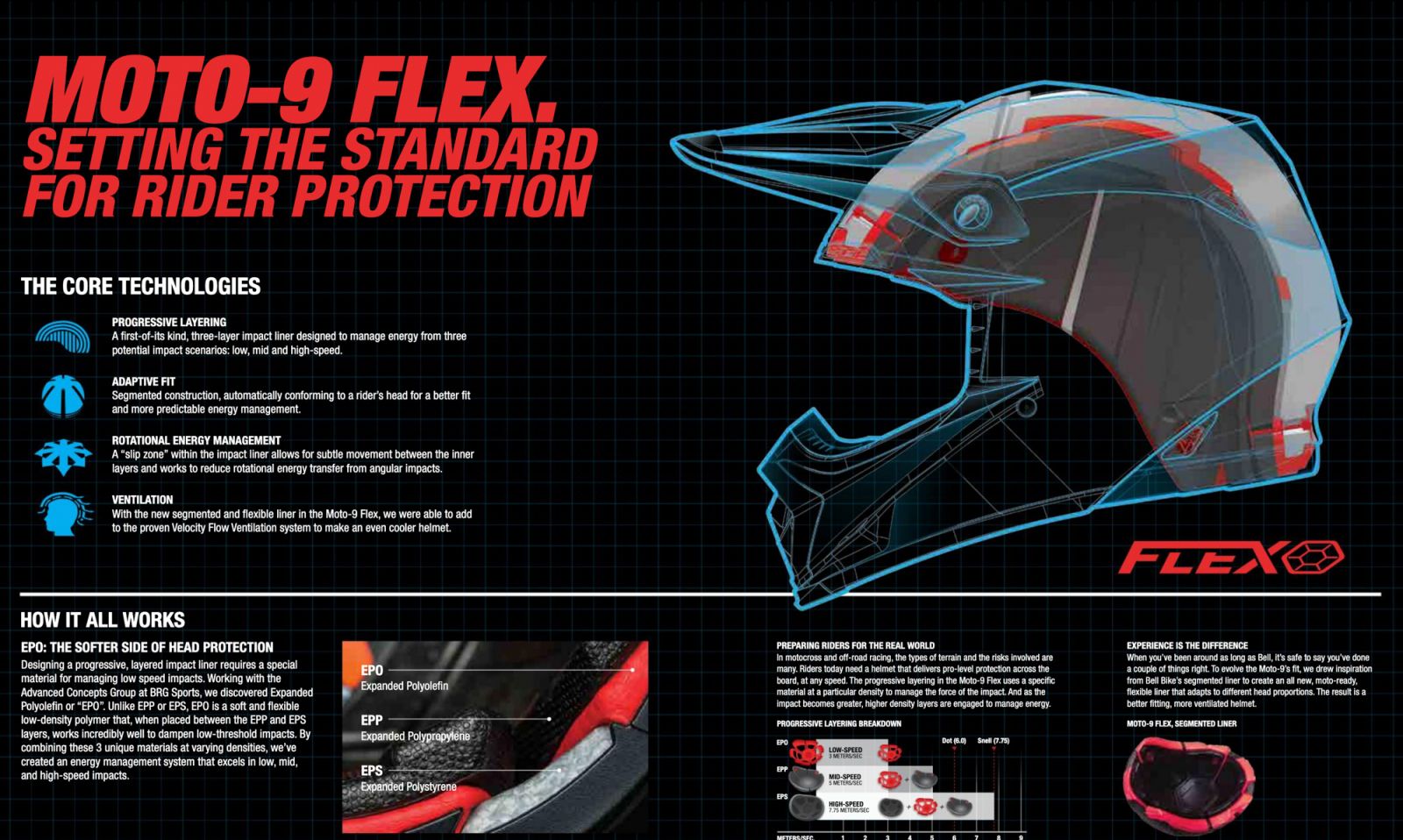 FLEX technology is a safety feature designed by Bell Helmets, and you’ll find it in its premium Moto-9 lid (Bell also offers a Moto-9 with MIPS technology).
FLEX technology is a safety feature designed by Bell Helmets, and you’ll find it in its premium Moto-9 lid (Bell also offers a Moto-9 with MIPS technology).
The FLEX system is a three-layer impact liner engineered to manage energy in low, mid, and high-speed impacts.
It acts as a ‘slip zone’ within the impact liner, allowing for subtle movement between the inner layers where it’s designed to reduce rotational energy transfer from angular impacts.
The FLEX system also boasts a segmented construction which automatically conforms to a rider’s head shape for a better fit and more predictable energy management.
6D Omni-Directional Suspension:
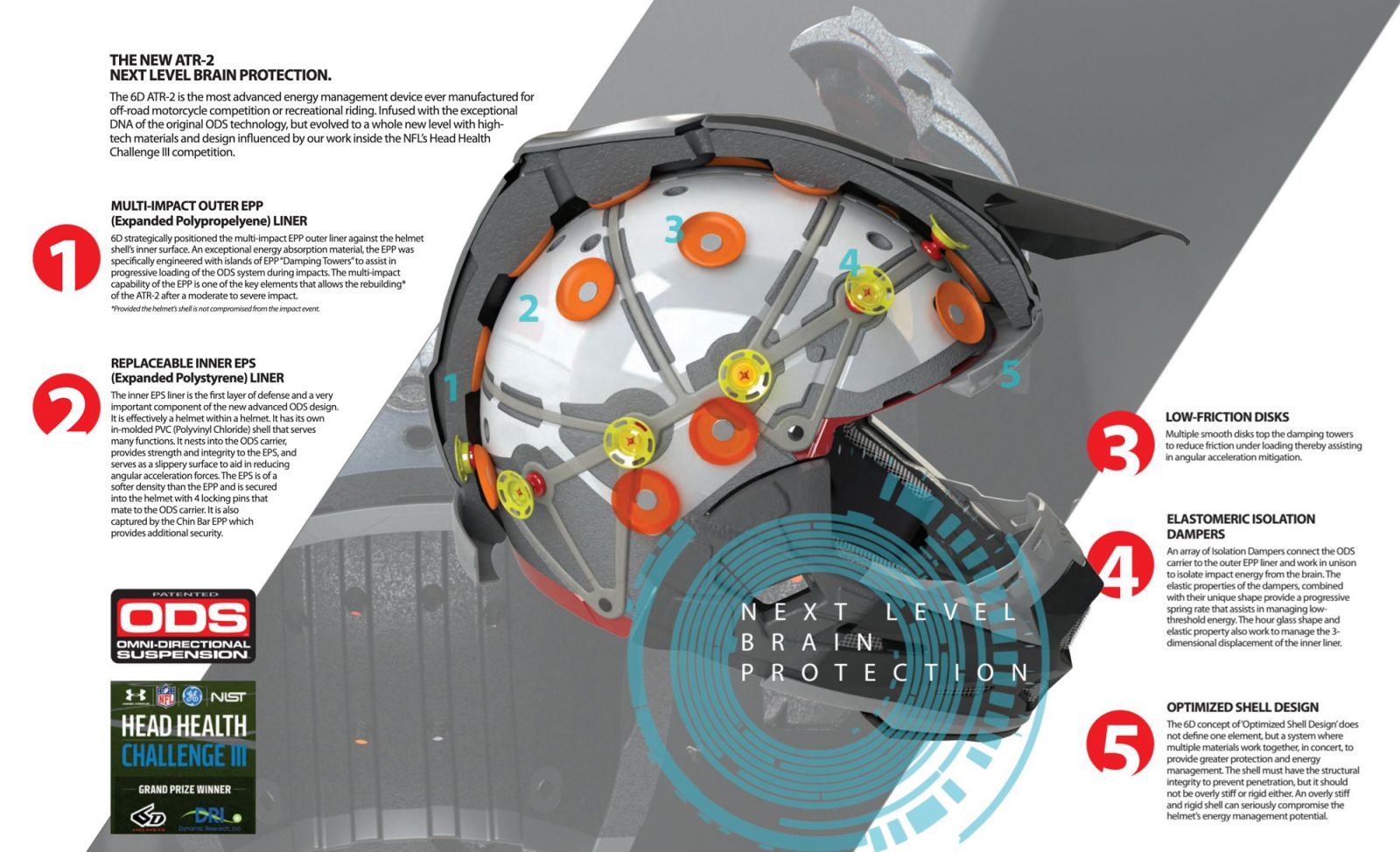 6D Helmet’s Omni-Directional Suspension system was one of the most pioneering helmet technologies to hit the market in the last decade and subsequently prompted all motocross helmet manufacturers to go even further with their developments.
6D Helmet’s Omni-Directional Suspension system was one of the most pioneering helmet technologies to hit the market in the last decade and subsequently prompted all motocross helmet manufacturers to go even further with their developments.
The ODS technology acts as an in-helmet suspension and kinetic energy management system, and much like the other technologies, it’s designed to reduce energy transfer to the brain over a much broader range of energy demands, from low, mid and high energy impacts.
Built with a dual-liner assembly, it will displace and shear omni-directionally when suffering an impact from a crash.
Basically, it provides significantly improved performance against both linear and angular accelerations - meaning it offers maximum protection for impacts from all different angles and speeds.
Shoei MEDS:
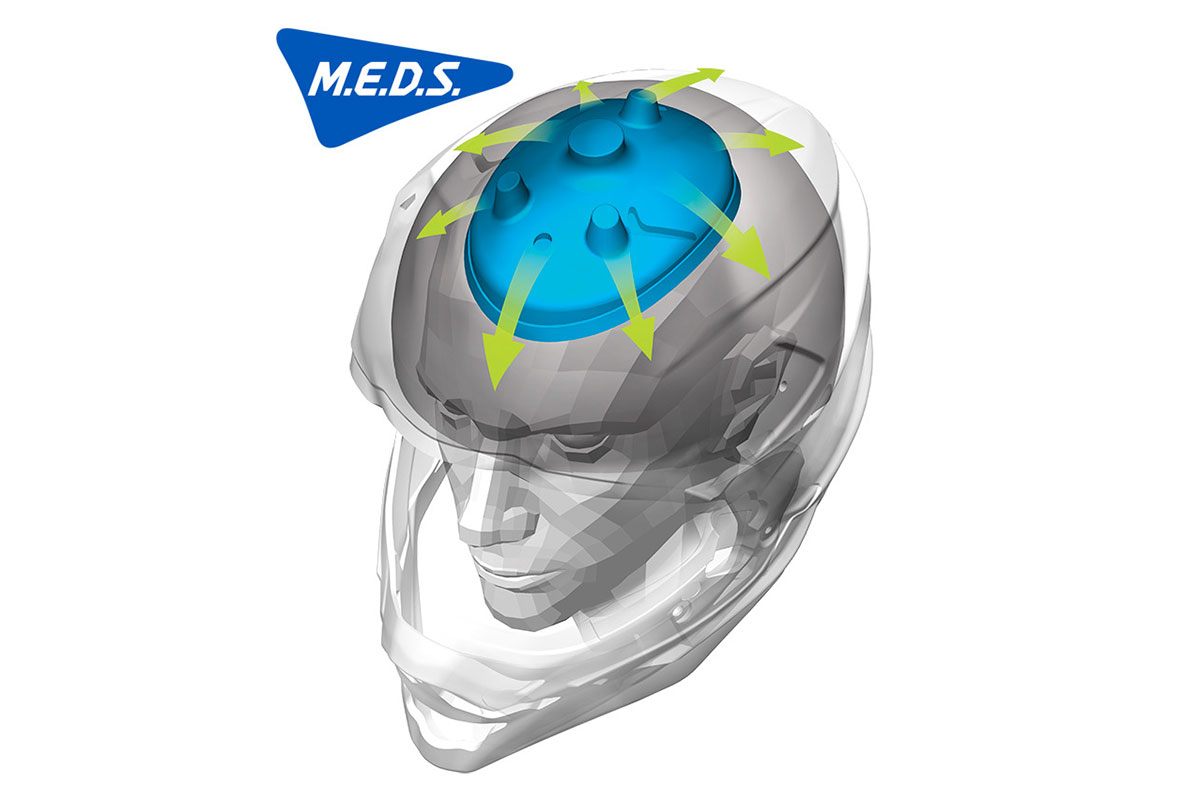 Shoei is renowned for its premium helmets, and it recently updated its VFX-WR line with the all-new MEDS technology.
Shoei is renowned for its premium helmets, and it recently updated its VFX-WR line with the all-new MEDS technology.
MEDS is short for Motion Energy Distribution System, and while it’s designed to provide the same results as some of the above technologies, it does so in a different way.
The MEDS technology utilises varying densities of foam for impact absorption, where the insert liner, anchored by a centre column, produces an effect that reduces rotational acceleration energy 15 percent compared to its previous models.
Fly Racing AIS:
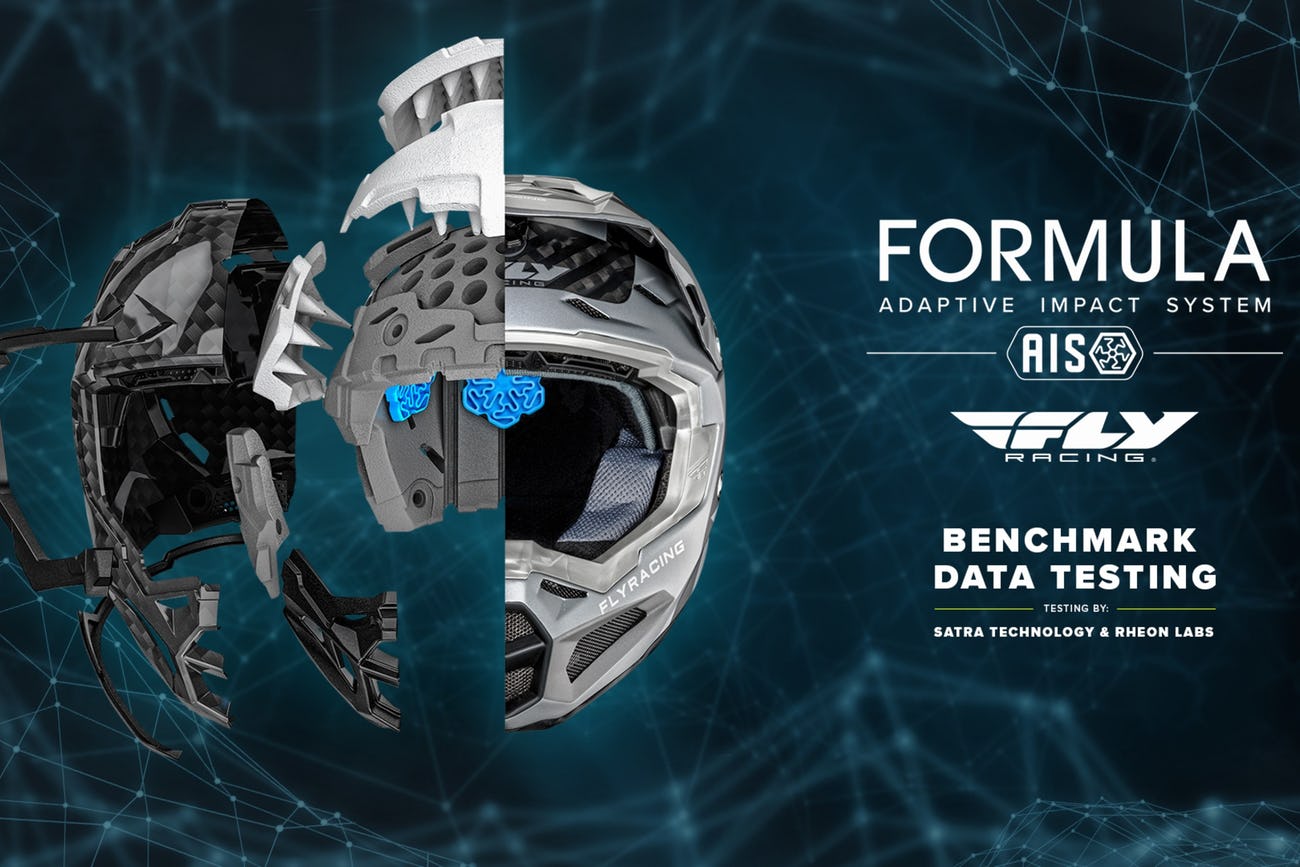 Fly Racing shifted itself into the premium helmet category when it introduced its Adaptive Impact System (AIS) inside a carbon fiber outer shell, which is available in its Formula lid.
Fly Racing shifted itself into the premium helmet category when it introduced its Adaptive Impact System (AIS) inside a carbon fiber outer shell, which is available in its Formula lid.
The AIS is made up of three key factors: Energy cells, Conehead technology, and expanded volume EPS liner.
The impact energy cells maximise absorption of low speed linear and rotational impacts, with their unique shape and maze-like structure allowing them to compress and shear.
The Conehead technology acts as a crumple zone, and absorbs and dissipates impact forces more effectively than traditional EPS helmet liners. It produces more progressive energy absorption through a broader range of impact scenarios.
To help combat impacts to common zones on the helmet, the expanded volume EPS means strategic areas of the lid have greater impact absorption, and more suspension between your head and the ground.
M2R X-Halo Shield:
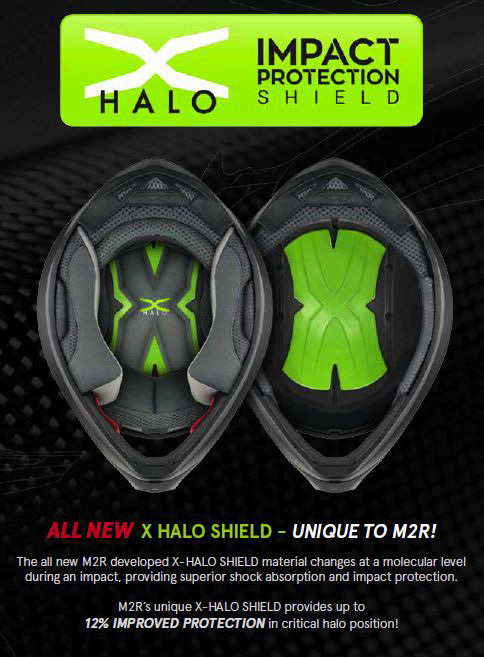
The M2R X-Halo adds a fourth layer of defence against impact in its X4.5 helmet, where it combines with the dual-layer EPS liner under a quad composite outer shell to a provide a strengthened and more reinforced level of protection.
The X-Halo Shield material changes at a molecular level during an impact and they essentially lock on impact, successfully absorbing and dissipating an impact’s energy.
The system provides up to 12 percent improved impact protection when in critical halo position, and during an impact, superior protection and shock absorption are achieved without compromising the shell or weight of the helmet.
Learn more about dirt bike helmets:
How To Wash Your Motocross Helmet
Ultimate Guide to Dirt Bike Helmets
Dirt Bike Helmet Buyer's Guide
Entry-Level Dirt Bike Helmet Comparison















